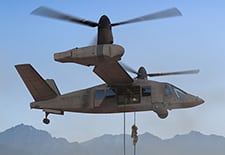
AMARILLO, Texas - Bell Helicopter’s V-280 Valor is ready to carry troops into combat as a functional tilt-rotor airframe, company officials claim. The experimental aircraft is ready to enter the acquisition cycle and move beyond the early development phases, according to a company official.Bell's director of global military business development, Carl Coffman says the Future Vertical Lift (FVL) Joint Multi-Role Technology Demonstrators (JMR-TD) aircraft may be closer to the Engineering and Manufacturing Development (EMD) phase.But according to Maj. Gen. William Gayler,…

 By
By 











